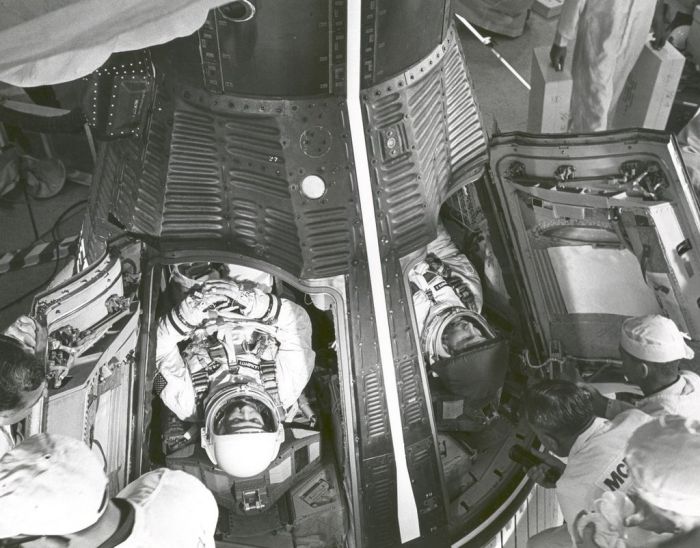|
|
History: NASA Archive Photography
|
The NACA XS-1 (Bell X-1) was followed by additional experimental vehicles, including the X-15 in cooperation with the US Air Force and US Navy. The design featured a slender fuselage with fairings along the side containing fuel and early computerized control systems. When the spacerace began the main objective was to get a person into space as soon as possible, therefore the simplest spacecraft that could be launched by existing rockets was favored. This led to the choice of a small capsule spacecraft while rocket plane proposals like a modified X-15 were turned down. Instead X-15 was used for development of techniques and equipment of value for the space missions. This included jets for changing the orientation of a spacecraft, space suits for astronauts and horizon definition for navigation. Nearly 200 flights were made between 1959 and 1968 allowing NASA to collect data vital not only to the spacerace but also the design of the Space Shuttle. The altitude record for X-15 was 354,200 feet (107.96 km).
- Project Mercury (1959–1963, manned missions from 1961)
Project Mercury was initiated in 1958 and started NASA down the path of human space exploration with missions designed to discover if man could survive in space. Representatives from the U.S. Army, Navy, and Air Force were selected to provide assistance to NASA. Pilot selections were facilitated through coordination with U.S. defense research, contracting, and military test pilot programs. On May 5, 1961, astronaut Alan Shepard became the first American in space when he piloted Mercury-Redstone 3, called Freedom 7, on a 15-minute suborbital flight. John Glenn became the first American to orbit the Earth on February 20, 1962 during the flight of Friendship 7.
At that time the Soviet Union had taken the lead in the space race. In April 1961, one month before Alan Shepard, cosmonaut Yuri Gagarin became the first person in space when he orbited the Earth once in Vostok 1. Further in August the same year, the follower Vostok 2 made a day long orbital flight which led to canceling of additional American suborbital missions; they were no longer enough. Three more orbital flights were made by the Mercury project after Friendship 7, the last in 1963. Three additional orbital flights were cancelled since it was clear that the Mercury spacecraft had reached its limit of staying in space.
|
|









